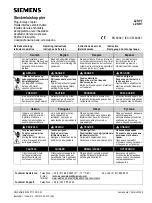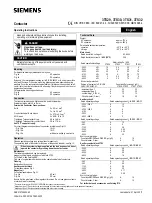
2.3 General features of protection
stages
2 Protection functions
Technical description
46
VAMP 24h support phone +358 (0)20 753 3264
VM50.EN004
Output matrix
Using the output matrix the user connects the internal start
and trip signals to the output relays and indicators. For more
details see chapter 5.4.
Blocking
Any protection function, except arc protection, can be blocked
with internal and external signals using the block matrix
(chapter 5.5). Internal signals are for example logic outputs and
start and trip signals from other stages and external signals
are for example digital and virtual inputs.
When a protection stage is blocked, it won't pick-up in case of a
fault condition is detected. If blocking is activated during the
operation delay, the delay counting is frozen until the blocking
goes off or the pick-up reason, i.e. the fault condition,
disappears. If the stage is already tripping, the blocking has no
effect.
Retardation time
Retardation time is the time a protection relay needs to notice,
that a fault has been cleared during the operation time delay.
This parameter is important when grading the operation time
delay settings between relays.
DELAY SETTING > t
+ t
FAULT
RET
TRIP CONTACTS
t
< 50 ms
RET
t
FAULT
RetardationTime
Figure 2.3-1. Definition for retardation time. If the delay setting would be
slightly shorter, an unselective trip might occur (the dash line pulse).
For example when there is a big fault in an outgoing feeder, it
might start i.e. pick-up both the incoming and outgoing feeder
relay. However the fault must be cleared by the outgoing feeder
relay and the incoming feeder relay must not trip. Although the
operating delay setting of the incoming feeder is more than at
the outgoing feeder, the incoming feeder might still trip, if the
operation time difference is not big enough. The difference
must be more than the retardation time of the incoming feeder
relay plus the operating time of the outgoing feeder circuit
breaker.
















































